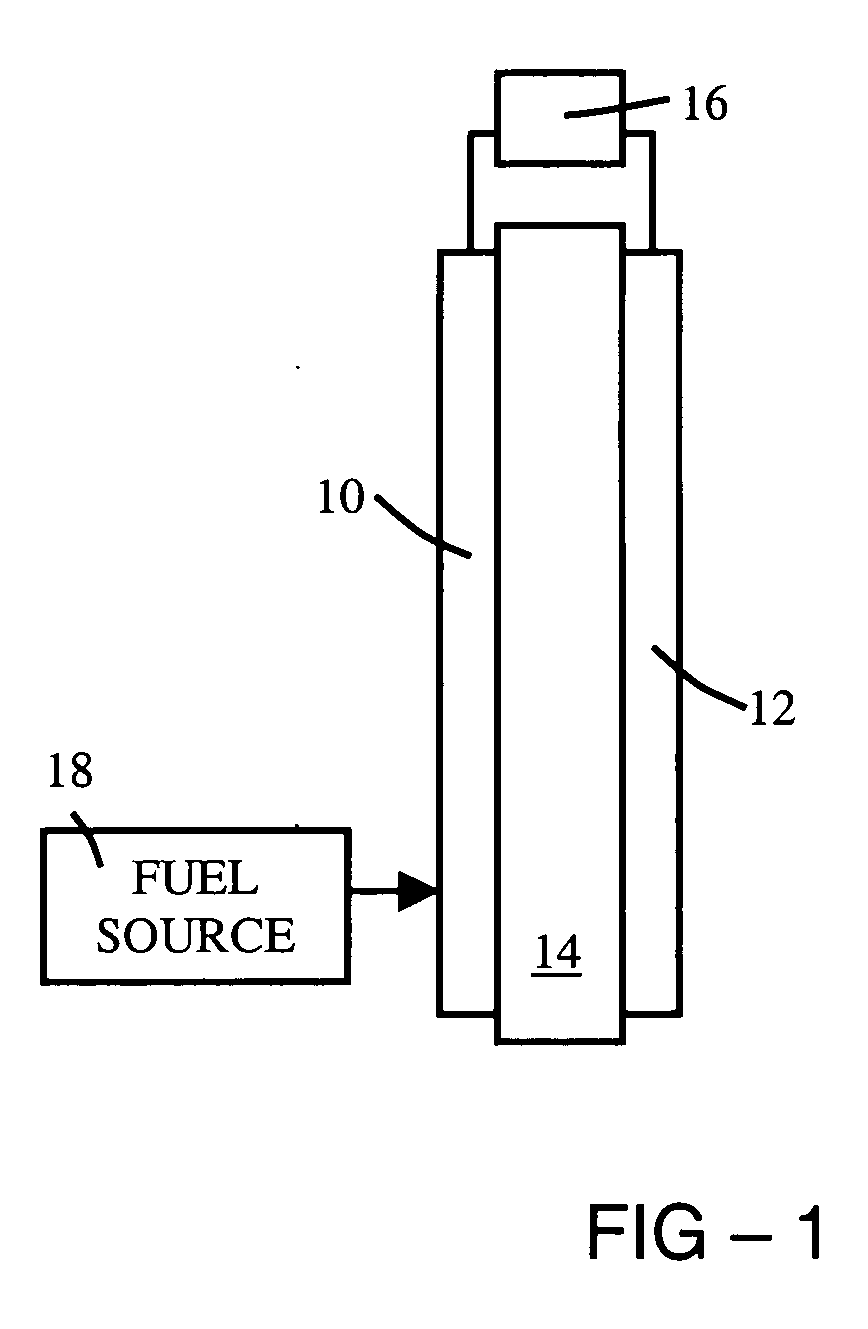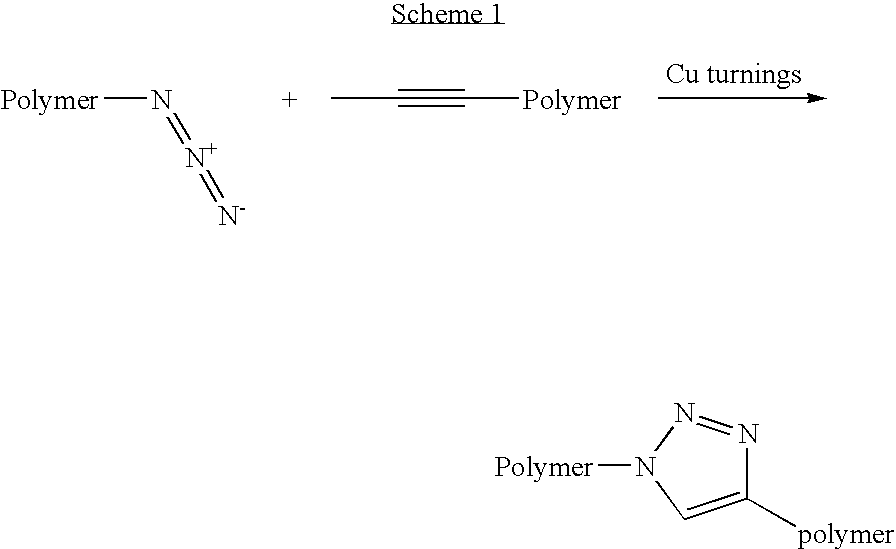Novel proton exchange membranes using cycloaddition reaction between azide and alkyne containing components
a proton exchange membrane and azide technology, applied in the field of polymers, can solve the problems of reducing the ion exchange capacity and therefore the proton conductivity, high methanol and hydrogen permeability, and high permeability of hydrogen, so as to reduce the free volume of the membrane, improve the mechanical and dimensional stability of the pem, and reduce the cross-over rate
- Summary
- Abstract
- Description
- Claims
- Application Information
AI Technical Summary
Benefits of technology
Problems solved by technology
Method used
Image
Examples
Embodiment Construction
[0015] Improved cross-linked polymers, and processes for making them, are described. The cross-linked polymers can be used in ion-exchange membranes (sometimes also referred to as ion-electrolyte membranes). The ionic species of interest may be protons, alkali ions, or other ions, depending on the application. In examples below, proton-conducting polymers are discussed. However, the invention is not limited to proton-conducting materials, as the approach can be used with other ion-conducting polymers and membranes made therefrom.
[0016] A fuel cell typically includes an anode, a cathode, a fuel source, and a proton-exchange membrane (PEM) located between the anode and the cathode. The PEM includes a proton-conducting polymer, but may also include additional materials chosen to improve proton conductivity, or other electrical property, mechanical property, or other property.
[0017] The cross-linking process effectively reduces free volume and increases stability (thermal and mechanic...
PUM
| Property | Measurement | Unit |
|---|---|---|
| Acidity | aaaaa | aaaaa |
| Electrical conductor | aaaaa | aaaaa |
Abstract
Description
Claims
Application Information
 Login to View More
Login to View More - R&D
- Intellectual Property
- Life Sciences
- Materials
- Tech Scout
- Unparalleled Data Quality
- Higher Quality Content
- 60% Fewer Hallucinations
Browse by: Latest US Patents, China's latest patents, Technical Efficacy Thesaurus, Application Domain, Technology Topic, Popular Technical Reports.
© 2025 PatSnap. All rights reserved.Legal|Privacy policy|Modern Slavery Act Transparency Statement|Sitemap|About US| Contact US: help@patsnap.com



